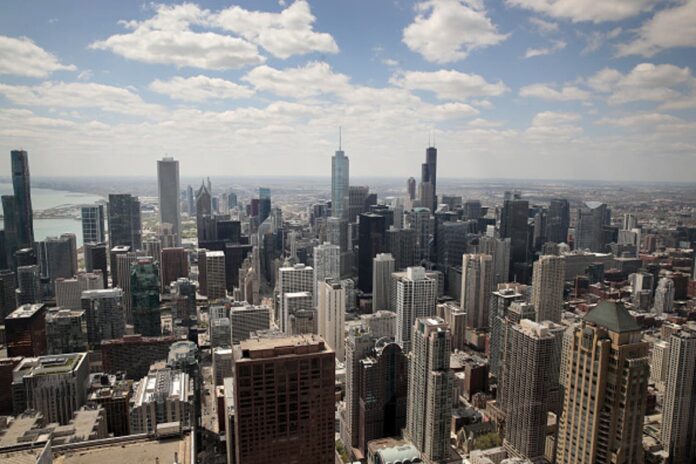Cities in the United States are at risk of structural damage caused by ‘underground climate change’ as the sand, clay and rock layers beneath buildings heat up, according to a recent study . Researchers from Northwestern University have linked underground climate change to buildings and other urban infrastructure shifting due to the rising temperatures deforming the ground. ‘Underground climate change is a silent hazard,’ Northwestern study-lead Alessandro Rotta Loria said. ‘The ground is deforming as a result of temperature variations, and no existing civil structure or infrastructure is designed to withstand these variations,’ he added. Mr Rotta Loria said while this is not necessarily dangerous to the public’s safety, it can affect everyday operations and should be considered when building new infrastructure. The new study, titled The silent impact of underground climate change on civil architecture, claims underground climate change could cause the ground to sink by up to eight millimetres (0.31 in) or expand up by 12 millimetres (0.47 in). Though this is not detectable to the human eye it could cause damage to the infrastructure of large buildings and their operations requirements because they are not equipped to handle the shift. By placing temperature sensors across the Chicago Loop, Mr Rotta Loria compared how ground temperatures have evolved in certain areas like subways tunnels versus greens spaces. He found that temperatures under the loop were often 10 degrees higher than under a park. Mr Rotta Loria then modeled how the ground and materials, like clay and limestone, deform when responding to heat ‘Chicago clay can contract when heated, like many other fine-grained soils,’ Mr Rotta Loria said. ‘As a result of temperature increases underground, many foundations downtown are undergoing unwanted settlement, slowly but continuously. In other words, you don’t need to live in Venice to live in a city that is sinking – even if the causes for such phenomena are completely different.’ While the study used Chicago as an example, Mr Rotta Loria emphasised how underground climate change is common in ‘nearly all urban areas worldwide. Though the shift is small, and not detectable to the human eye, it could cause damage to the infrastructure of large buildings and their operations requirements because they are not equipped to handle the shift. ‘It’s not like a building will suddenly collapse,’ Mr Rotta Loria said adding that the sinking is happening at a slow pace. He added: ‘The consequences for serviceability of structures and infrastructures can be very bad, but it latkes a long time to see them. It’s very likely that underground climate change has already caused cracks and excessive foundation settlements that we didn’t associate with this phenomenon because we weren’t aware of it.’


